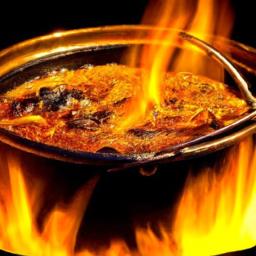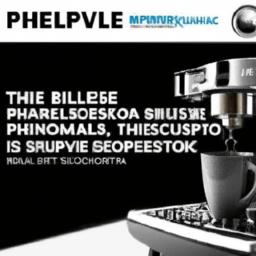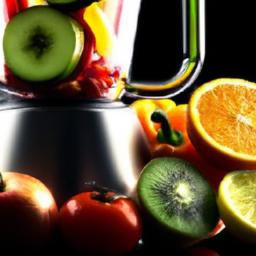Cocotte vs. Dutch Oven: Decoding Their Unique Charms for Your Kitchen
Have you ever observed a heavy, timeless pot and wondered what sets it apart? Terms like “cocotte” and “Dutch oven” might sound elegant, but are they truly distinctive cookware pieces or just two words describing the same item? At How To Cook Gourmet, we believe these pots hold more nuances than you might expect. Both excel at delivering hearty stews that wow your guests. But what differentiates one from the other? Let’s delve into the nuances of their design, heritage, materials, and ideal culinary uses to uncover which pot deserves a place on your stove.
The Roots of Dutch Ovens and Cocottes: From Sturdy Origins to Sophisticated Styles
Imagine the early days of cooking when heavy-duty pots were the champions of slow-cooked meals over open flames. This legacy belongs to the Dutch oven, which originated in Europe before journeys brought it to early American settlers. Renowned for their robust cast iron construction, these pots were built to withstand outdoor use and rigorous cooking.
On the flip side is the cocotte, a French innovation inspired by the Dutch oven’s functionality but transformed into a more refined kitchen essential. Cocottes are typically smaller, often glazed in vibrant colors, designed to dazzle when placed on an indoor kitchen table rather than a rugged campsite.
| Cookware | Origin | Design Style | Primary Use |
|---|---|---|---|
| Dutch Oven | Europe & America | Heavy-duty cast iron, rustic | Outdoor campfire cooking, slow stews, baking |
| Cocotte | France | Elegant enameled cast iron, colorful | Indoor roasting, serving, small batch cooking |
Understanding these origins highlights their distinct purposes: the Dutch oven embodies rugged, time-tested resilience, while the cocotte brings a touch of French finesse into your culinary space. Consider which echoes your kitchen’s personality – the hardy traveler’s spirit or the sophisticated host’s charm.
Why Cast Iron Remains the Cornerstone of Quality Cookware
Cast iron remains unrivaled for cookware durability and heat management. Its extraordinary heat retention ensures your dishes cook uniformly, avoiding those dreaded unevenly cooked spots. Unlike thinner materials, cast iron gradually soaks up heat and radiates it evenly.
This material is not only nearly indestructible but also improves with each use. Over time, cast iron develops a natural “seasoning,” a subtly non-stick layer that enhances flavor without synthetic coatings.
- Superior heat retention: Maintains consistent cooking temperatures for prolonged periods.
- Exceptional lifespan: Often handed down through generations due to its toughness.
- Multipurpose use: Compatible with stovetop, oven, grill, and campfire.
- Flavor enhancement: Deepens taste complexity as seasoned layers build up.
| Material | Heat Retention | Durability | Influence on Flavor |
|---|---|---|---|
| Cast Iron | Excellent | Extremely High | Enhances flavors over time |
| Stainless Steel | Moderate | High | Neutral |
| Aluminum | Low | Moderate | Neutral |
Though it lacks flashiness, cast iron cookware is a kitchen staple for those who cherish reliability and excellent cooking results. Whether you’re slowly simmering a stew or baking artisan bread, cast iron stands out as an indispensable companion.
Size and Shape: Choosing a Pot That Matches Your Kitchen and Meal Size
When deciding between a cocotte and a Dutch oven, their form factor is a key consideration. Are you looking for a compact pot that fits seamlessly into limited kitchen space, or do you prefer a bold, capacious vessel to prepare large family meals?
Cocottes are usually shallower with rounded contours, favoring small to medium portions and fitting neatly under lower oven racks. Dutch ovens tend to be deeper and heavier, accommodating larger recipes, especially useful for soups, roast meats, or baking bread.
| Feature | Cocotte | Dutch Oven |
|---|---|---|
| Shape | Rounded, shallow | Rounded, deep |
| Typical Size | Small to medium (1-3 quarts) | Medium to large (4-7+ quarts) |
| Space Efficiency | Fits comfortably in tight kitchens | May require more counter or storage room |
| Best Used For | Intimate, refined meals | Substantial, hearty dishes |
If counter space is at a premium, a cocotte offers elegance without bulk. Conversely, if you regularly host or cook in volume, a larger Dutch oven gives you the room and capacity to do so.
Mastering Heat Control: Essential Cooking Techniques with These Pots
Achieving perfectly cooked meals in a cocotte or Dutch oven largely comes down to understanding heat dynamics. How does your pot retain and distribute heat, and how does this affect the finished dish?
Traditional cast iron Dutch ovens take slightly longer to warm up-they absorb heat slowly but release it consistently-ideal for prolonged, steady cooking sessions like braises or casseroles. Enamel-coated cocottes heat more rapidly, reacting swiftly to temperature adjustments, making them superb for recipes requiring quick changes.
| Characteristic | Cocotte | Dutch Oven |
|---|---|---|
| Heat Response | Faster to heat, moderate retention | Slower to heat, excellent retention |
| Optimal Uses | Rapid braising, delicate sauces | Long-duration stews, deep roasts |
| Transition Between Oven & Stove | Seamless & quick adjustment | Robust & steady |
Pro cooking tip: always preheat your pot before adding ingredients. This practice creates a uniform cooking surface and prevents sticking. Another insider tip is the “lid venting method”-slightly tilting the lid lets excess steam escape, helping to control moisture and even crisp the food’s surface when needed.
- Preheat cookware for even cooking.
- Adjust stove heat rather than relying solely on the lid position.
- Use lid placement to manage cooking humidity effectively.
Which Pot Excels for Soups, Stews, and Slow-Cooked Delights?
Both cocottes and Dutch ovens are champions in slow cooking with their heavy walls and snug lids that trap in moisture and flavors. However, they bring distinct flair and function to your kitchen battles.
| Attribute | Cocotte | Dutch Oven |
|---|---|---|
| Coating | Enamel-coated cast iron | Often cast iron, sometimes enamel-coated |
| Form | Oval or round, refined design | Round, substantial and chunky |
| Heat Performance | Excellent | Excellent |
| Oven & Stove Compatibility | Handles temperature shifts well | Exceptionally durable |
| Cost | Generally higher | More affordable |
For serious slow cooking that demands heat endurance and budget-friendliness, the Dutch oven reigns. But if you value aesthetics that enhance your dinner presentation, especially for meals that go straight from oven to table, the cocotte shines brilliantly.
Caring for Your Cocotte and Dutch Oven: Cleaning and Maintenance Tips
Proper upkeep ensures your cookware remains a kitchen staple for years to come-much like how grandmothers’ cast irons still dazzle despite decades of use.
- Allow cooldown before cleaning: Avoid sudden temperature changes to prevent cracks or warping in enamel and metal.
- Clean gently: Use warm soapy water with a soft sponge or cloth. Steer clear of abrasive scrubbers which can damage finishes.
- For stubborn residue: Sprinkle baking soda, add water to form a paste, let it rest, then softly scrub away stains.
Seasoned cast iron Dutch ovens require additional care: ensure thorough drying after washing, ideally warming on low heat, then lightly oil the interior to prevent rust.
| Care Aspect | Cocotte | Dutch Oven |
|---|---|---|
| Material Sensitivity | Handle enamel with care; avoid harsh scrubbing | Needs regular seasoning and oiling |
| Recommended Cleaning | Warm water and mild sponge | Warm water, gentle brushing; avoid soap if seasoned |
| Storage | Store dry, lid ajar to prevent moisture buildup | Dry thoroughly, lightly oiled to guard against rust |
Investing Wisely: Pricing and Value Insights
Good cookware need not drain your budget, but the quality often reflects in the price. Factors influencing cost include brand reputation, finish, size, and material quality.
| Type | Price Range (USD) | Durability | Ideal For |
|---|---|---|---|
| Cocotte | $80 – $300+ | Highly durable | Daily gourmet meals and stylish serving |
| Dutch Oven | $60 – $400+ | Extremely durable | Long slow cooking, baking, braising large dishes |
Are you leaning towards premium brands or seeking a budget-friendly option? Consider your cooking frequency, style, and whether features like oven-safe lids or vibrant enamel finishes matter to you. Smart spending means matching your cookware selection closely with your lifestyle and kitchen needs.
Our Recommendation: The Perfect Companion for Everyday and Special Occasion Cooking
Choosing your cookware partner is like picking a trusted sidekick for culinary escapades. Both cocottes and Dutch ovens hold unique spots in the spectrum of cooking needs.
The cocotte, with its manageable size and lighter weight, excels in preparing intimate meals and offers a visual treat that enhances your dining table’s aesthetic. Meanwhile, the Dutch oven-the heavyweight champion-shines in crafting large, hearty meals, thanks to its superior heat retention and capacity.
| Feature | Cocotte | Dutch Oven |
|---|---|---|
| Size | Small to medium | Medium to large |
| Weight | Lighter | Heavier |
| Best For | Everyday meals, smaller portions | Big family dinners, slow cooking |
| Appearance | Colorful, stylish | Classic, robust |
Wondering what fits best in your culinary repertoire? If your cooking usually involves quick, smaller meals, the cocotte may be your ideal companion. For grand feasts requiring enduring heat and volume, the Dutch oven is unmatched. Of course, having both could offer the versatility, style, and performance every kitchen dreams of.
FAQs: Clarifying Your Kitchenware Choices
- What exactly is a cocotte?
- A cocotte is a small to medium-sized cast iron pot, typically round with an enamel coating, designed for slow cooking French-style dishes. It’s known for adding a pop of color and style to the kitchen.
- How does a Dutch oven differ from a cocotte?
- While cocottes tend to be smaller and more elegant, Dutch ovens are larger, heavier, and built to cook substantial meals. Dutch ovens may also be oval-shaped, built for cooking large roasts or stews.
- Can these pots be used interchangeably?
- Yes, but cocottes are better suited for smaller portions, whereas Dutch ovens accommodate larger groups or meal-prepping needs.
- Do they cook foods differently?
- Both provide excellent heat retention and even cooking. Cocottes are often preferred for delicate dishes due to their size and quicker heat response, while Dutch ovens excel with long, slow cooking of robust meals.
- Are cocottes and Dutch ovens oven-safe and stovetop-friendly?
- Both are commonly designed for use on stovetops and in ovens. Check lids and handles for materials (e.g., wood) that may have heat limitations.
- How should I clean and maintain these pots?
- Clean with warm, soapy water using soft sponges. Avoid harsh abrasives on enamel. For cast iron, dry thoroughly and season regularly to prevent rust.
- Which pot should a beginner choose for gourmet home cooking?
- If cooking for one or two, a cocotte offers elegance and practicality. For families or batch cooking, the Dutch oven offers more capacity and durability.
In Conclusion: Both Pots Bring Distinctive Brilliance to Your Kitchen
In the great debate of cocotte versus Dutch oven, there’s no one-size-fits-all answer. The cocotte embodies French sophistication, ideal for smaller, elegant dishes, while the Dutch oven offers rugged durability, perfect for hearty, substantial meals.
Consider your cooking habits, kitchen space, and meal sizes. Do you want a lightweight, stylish option or a heavyweight workhorse? Both cookware pieces contribute rich flavor and slow-cooked goodness to your culinary endeavors.
At How To Cook Gourmet, we champion having both tools at your side. They complement each other beautifully, ensuring you’re prepared for any cooking challenge. So, which pot will become your new kitchen essential?




